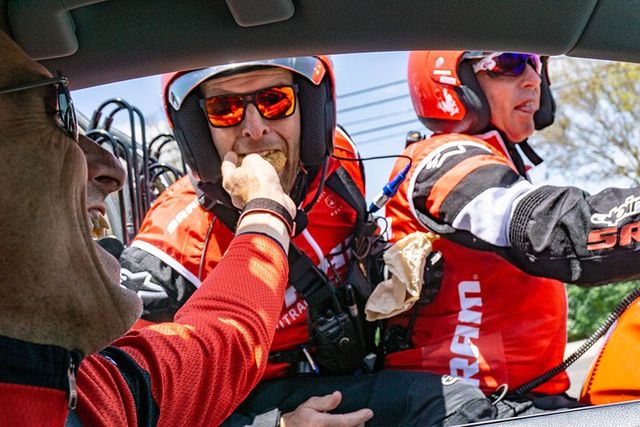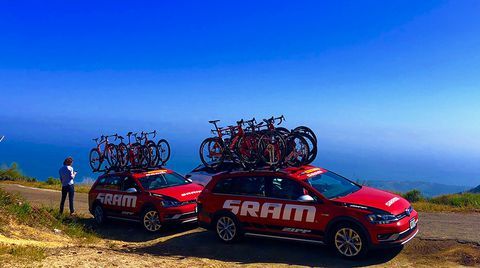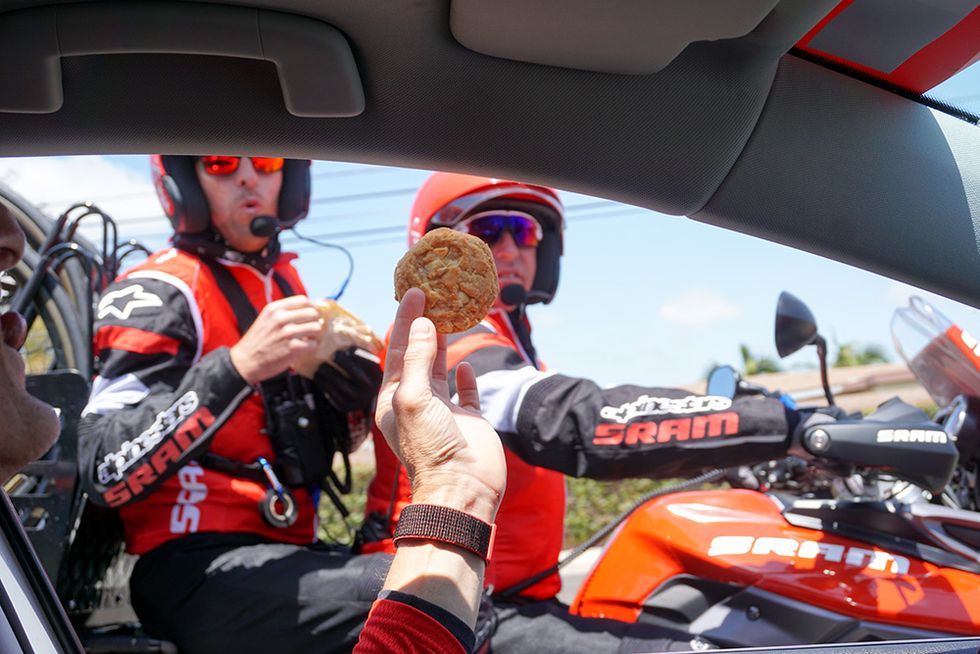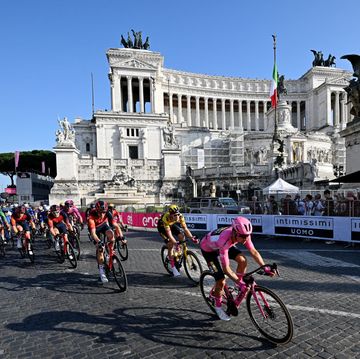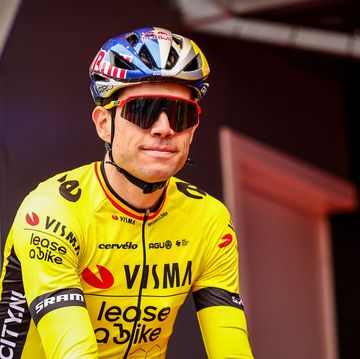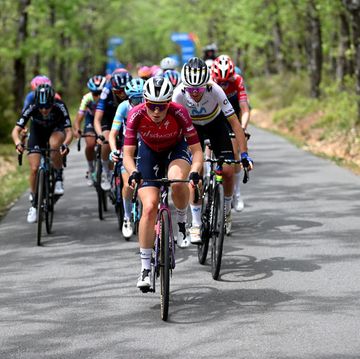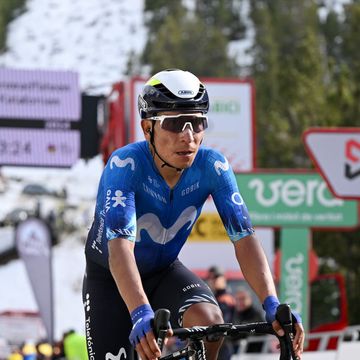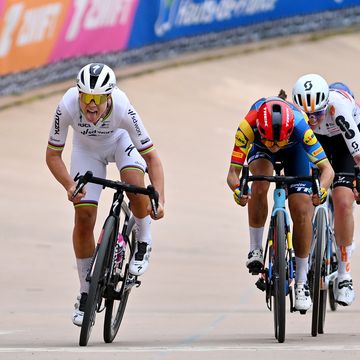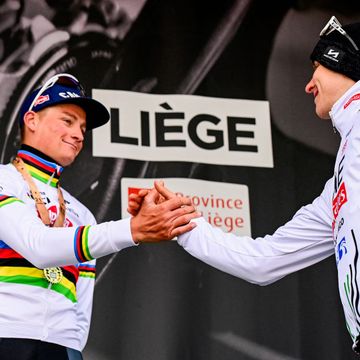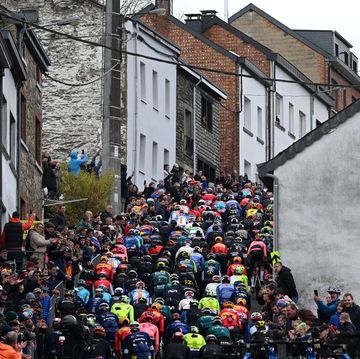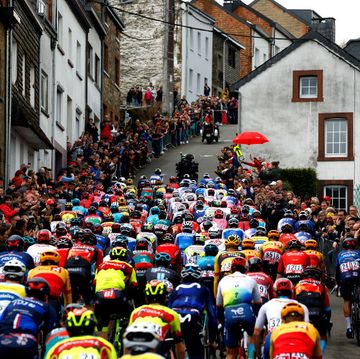For many riders, a flat tire or mechanical can mean the end of an event. For SRAM Neutral Race Support (NRS), it’s when the work begins.
Neutral race support provides assistance to racers unable to get help from their own team vehicles. This might take the form of a water bottle, a new wheel, or even a whole new bike, depending on the situation and the given rider’s needs. In most US-based races, neutral support is provided by SRAM, which has a full-time fleet of cars, motorcycles, and mechanics traveling the country to support road, cyclocross, and gran fondo events.
“In an ideal world, riders would always receive service from their teams,” SRAM mechanic Steve Donovan said. “They prefer to have familiar wheels and bikes.” But teams can’t always reach their riders if something goes wrong in the middle of a race. That’s where Donovan and his fellow mechanics come in.
Bicycling spent a day in the front seat of Donovan’s support car at this year’s Amgen Tour of California, which wrapped up on Saturday. For a big race like this, SRAM NRS takes out two cars and two motorcycles. Each vehicle has a driver and a “jumper,” both of whom are highly skilled mechanics. In the event of a flat, the jumper will hop out, change the wheel, and push the rider back into the race. If the peloton has moved on, the rider can use the caravan of team cars as a draft to return to the bunch.
These seconds of action require hours of preparation. Neutral support mechanics begin their day far before the racers, loading spare bikes and wheels onto car racks and carefully checking the equipment, as well as the vehicles themselves, before making their way to the stage start.
You’ve probably never seen a neutral support car in action, and that’s the way the mechanics like it. Although there is an undeniable thrill to leaping out of a moving car or off a motorcycle, Donovan said a good day is one where he stays in the back seat of his big red Volvo.
The day we joined him for the Tour of California was a good day. We were in the first car, just feet behind the breakaway for the race’s decisive second stage. On this stage a breakaway was established almost immediately, and our car dropped in behind. The next few minutes can be some of the most challenging for neutral mechanics, as the gap between the bunch and the break is not yet large enough for team cars to enter. That means any support needed will come from the neutral vehicle.
Mechanics begin by assessing the riders in the break. What size frames will they need in the event of a bike change? (If possible, the car will move these bikes to the outer part of the rack, making them quicker to access.) Are the riders using rim brakes or discs? If a rider is on disc brakes, what sizes are the rotors and axles? The mechanics can look all this up in their handbooks to prepare for anything that might happen.
With six disc wheel types in the Tour of California peloton, SRAM mechanics tend to offer a bike change to riders whose wheels they cannot quickly replace. A bike change means the jumper must quickly grab a bike from the roof of the vehicle, install the appropriate pedals for the rider, and set the saddle to the correct height. Often, the rider is pushed back into the race as soon as the pedals are installed, and the rest is adjusted on the go. Generally, the rider will stay on the neutral service bike for only a few miles before pulling over in a better spot and exchanging it for a team-supplied spare with the correct fit coordinates.
No such drama occurred in our day behind the peloton. Most of our excitement came from our driver, Roger Bennet, screeching the tires down twisty mountain descents to keep up with some of the best riders in the world. We also passed brown-bag lunches out the window to our motorcycles and encouraged schoolchildren along the route to cheer for the breakaway.
The NRS mechanics said they find themselves in much higher demand at amateur races, where few riders bring their own support. Bennet, for instance, had just returned from collegiate nationals. “It was a long day out there,” he said. “There were a lot of crashes.”
On the final climb of Stage 2, our car was unable to pull over and let the peloton pass. Instead, it served another important function: clearing a route through the fans on Gibraltar Road, where the stage concluded.
Even after we’d crossed the finish line, our work wasn’t done. NRS didn’t have to fix any flats during this particular race, but one of the motorcycles punctured on the way to the hotel, which necessitated a hasty repair. Back at the hotel, the mechanics had to clean and refuel their vehicles, check all their bikes and wheels for damage, and lock everything safely away.
On days when they do wheel or bike changes, NRS needs to make sure the riders return all their equipment and that nothing got damaged. After that, if there’s time, they might squeeze in a bike ride of their own.
